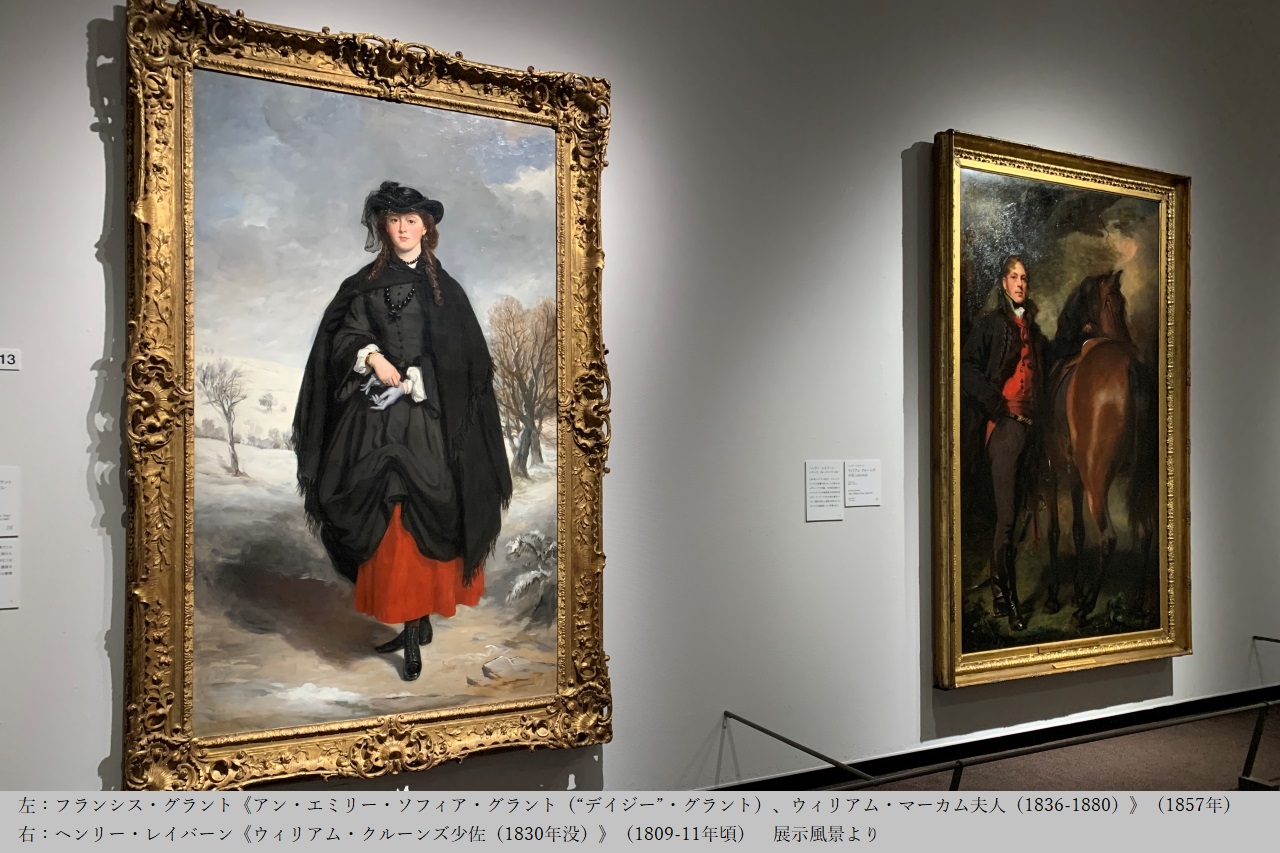
"Scottish National Gallery THE GREATS Beauty Masters" , which introduces the works of masters who colored the history of Western painting from the Renaissance period to the latter half of the 19th century, is being held at the Tokyo Metropolitan Art Museum from April 22 (Friday). The session is until July 3rd (Sun).
Since I participated in the press preview held prior to the opening, I will report on the state of the venue and the exhibited works.
The treasure of beauty that the Scottish National Gallery is proud of comes to Japan at once.
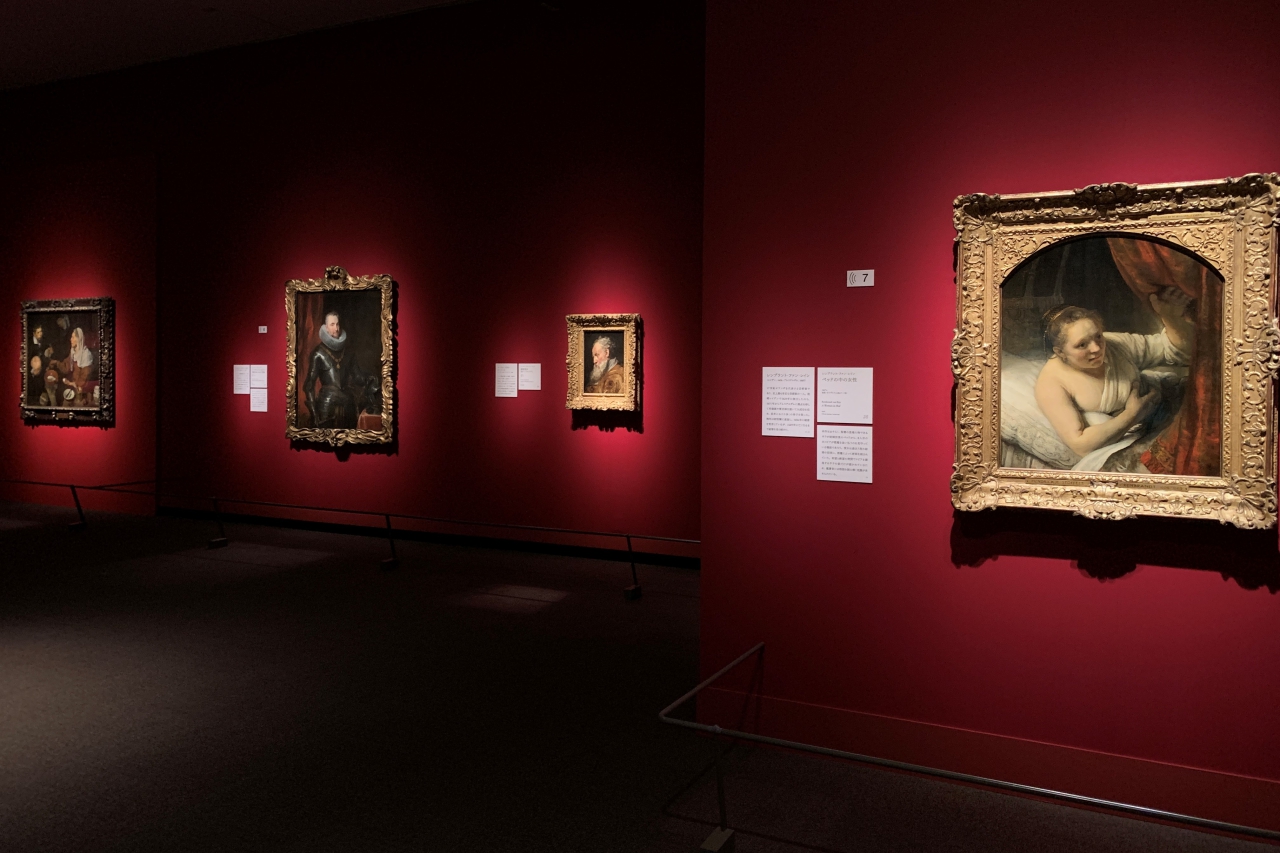
Exhibition scenery
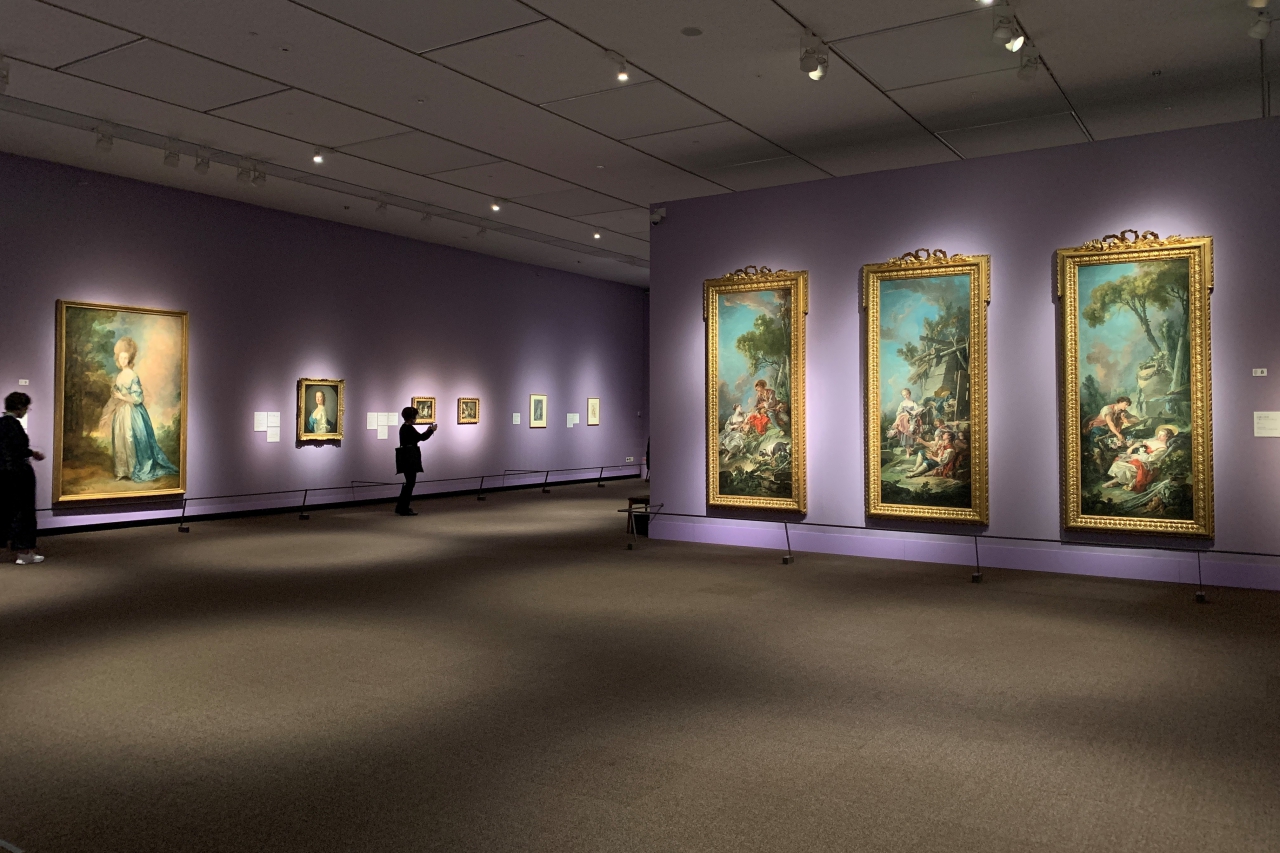
Exhibition scenery
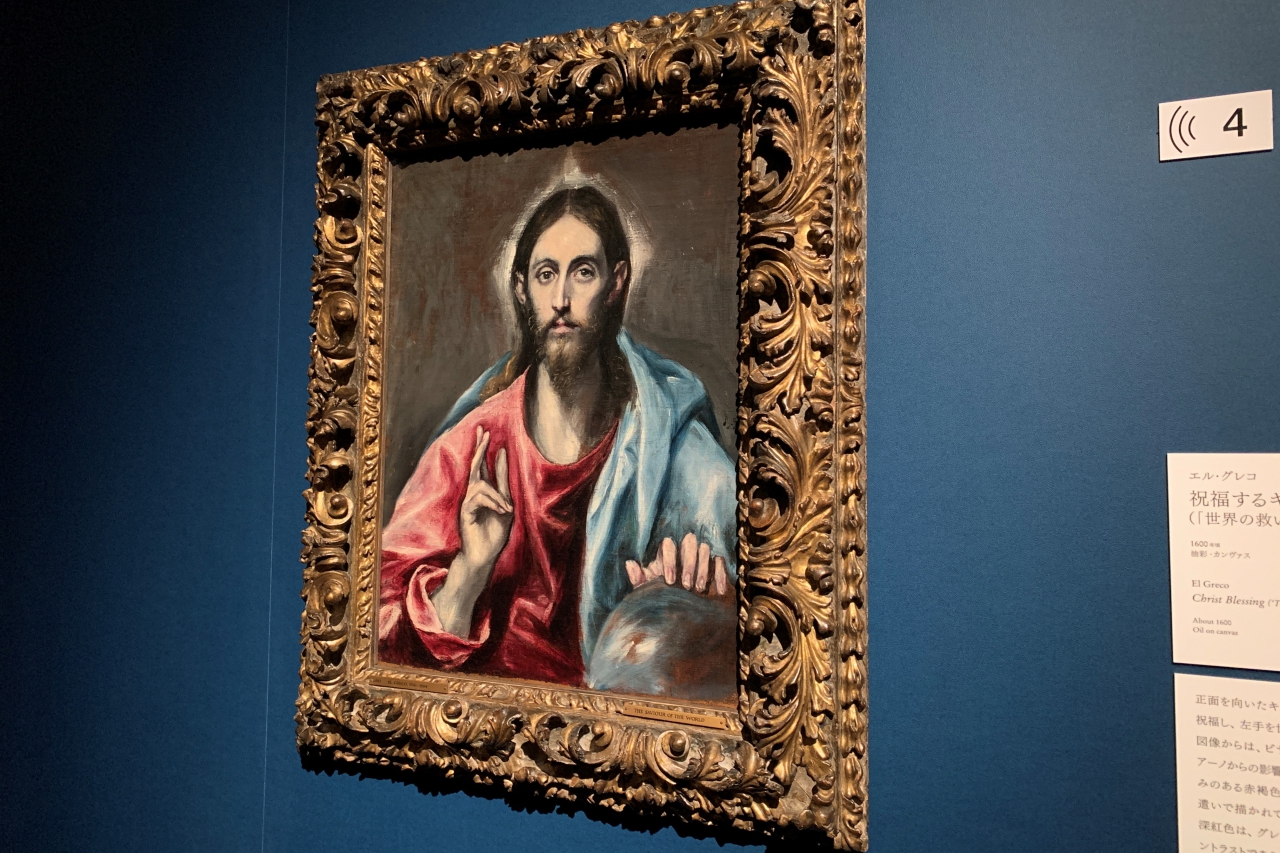
El Greco "Christ Blessing (" Savior of the World ")" circa 1600
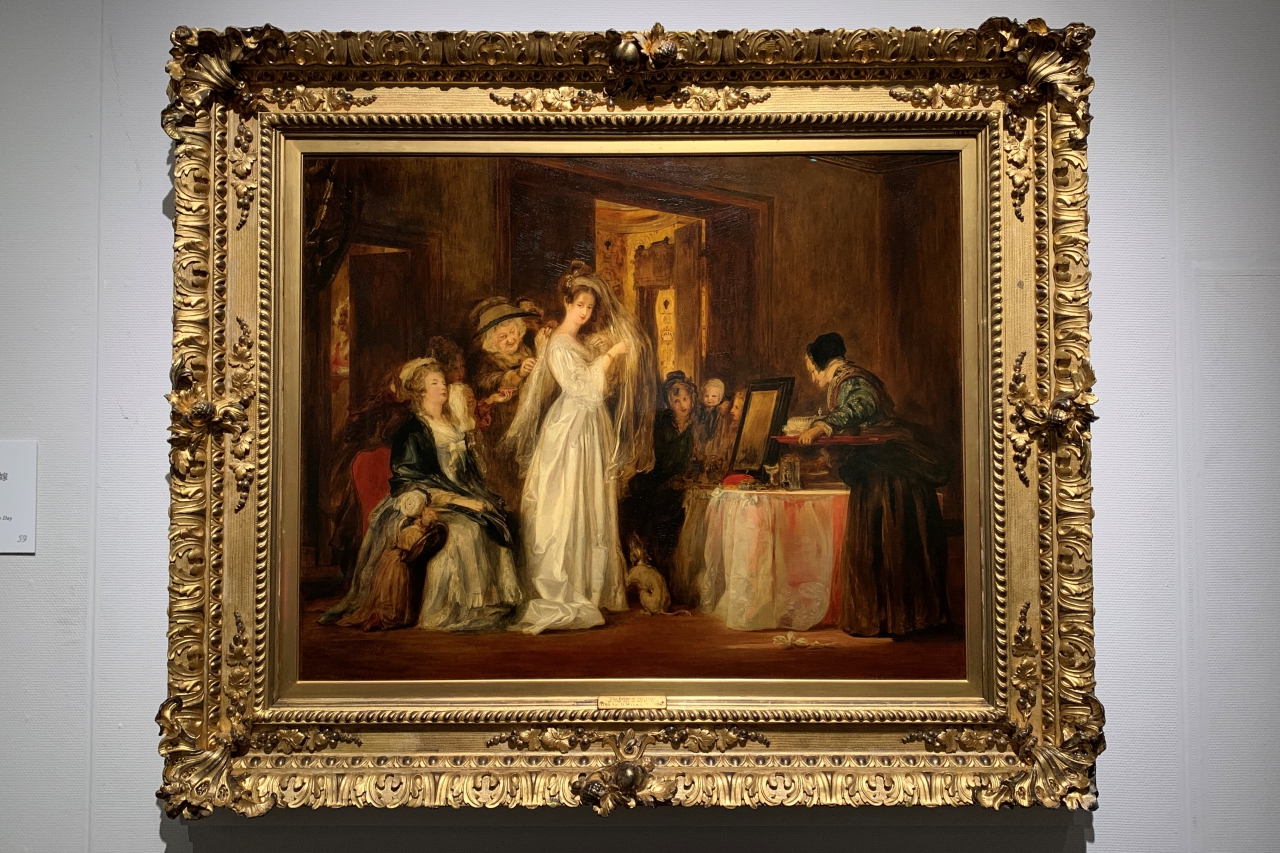
David Wilkie, Bride Dressing Up on Wedding Day, 1838
The Scottish National Gallery, opened in 1859 in Edinburgh, Scotland. It is known as one of the world's leading museums with many collections of works by important painters in the history of Western painting, such as Raphael, El Greco, Rubens, Velázquez, Rembrandt, Boucher, Corot and Renoir.
"Scottish National Gallery THE GREATS Beauty Masters" introduces the works of such masters (THE GREATS) in chronological order.
In addition, the museum's collection is full of charm from England-born painters such as Gainsborough, Reynolds, and Miley, as well as outstanding Scottish painters such as Rayburn, Ramsey, Grant, and Wilkey, which are hard to find in Japan. Many masterpieces are also exhibited.
Through about 90 oil paintings, watercolors, and drawings , you can learn about the history of the trends and transitions of British painting in the flow of Western painting from the Renaissance period to the latter half of the 19th century.
prologue
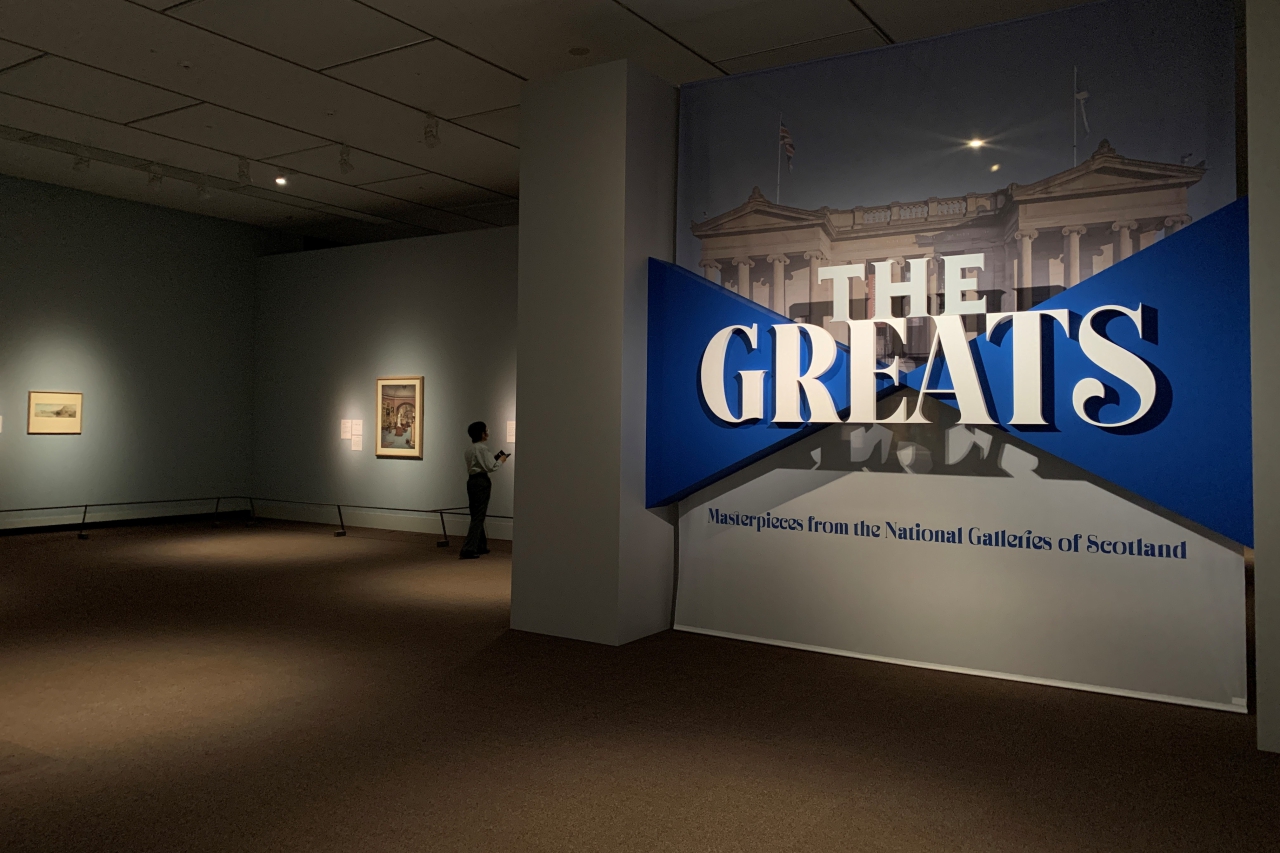
Venue entrance
This exhibition consists of four chapters, "Renaissance," "Baroque," "Grand Tour Era," and "Pioneers of the 19th Century," and a prologue + epilogue.
First, in the prologue, we will introduce the Scottish National Gallery.
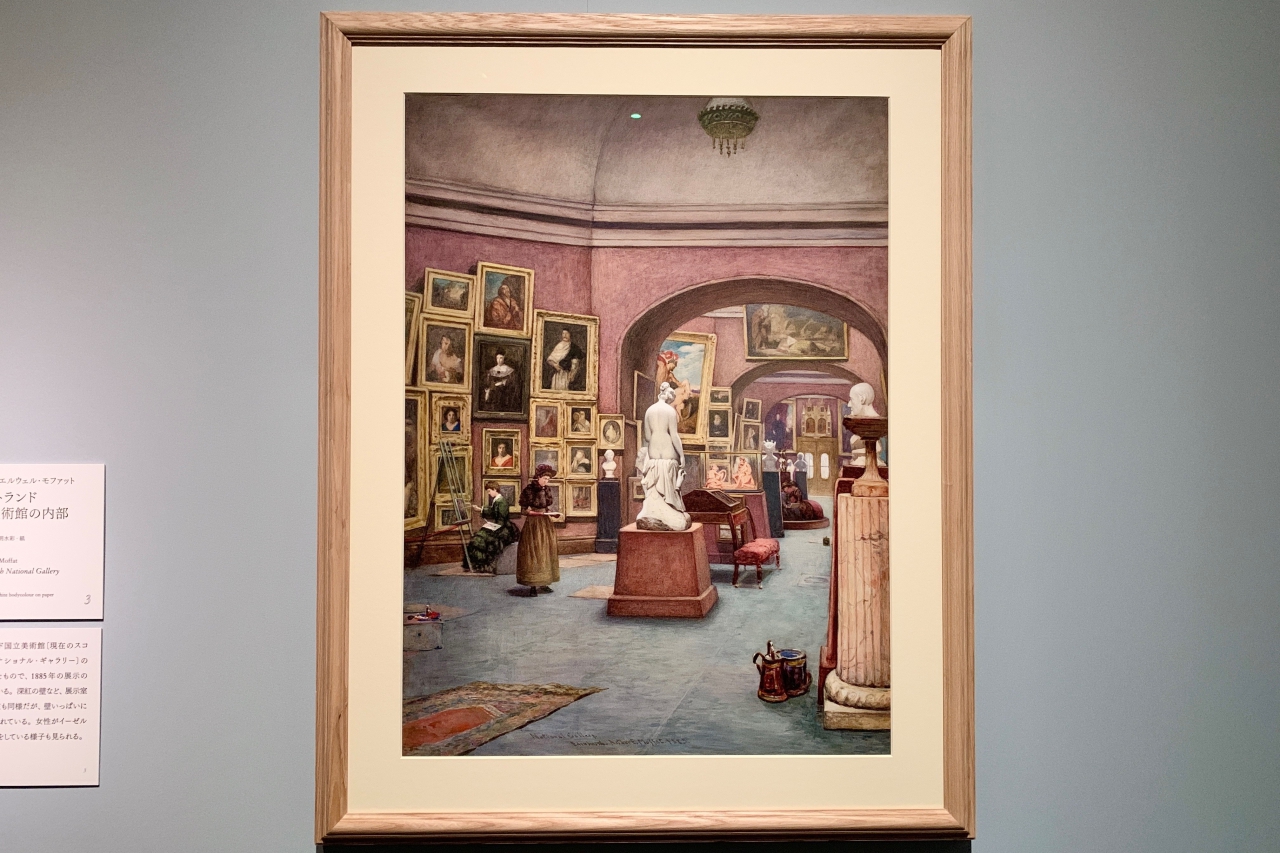
Arthur Elwell Moffat, Inside the Scottish National Gallery, 1885
There are many exhibitions that introduce the museums that rent out their works with photographs and movies, but in the prologue of this exhibition, the state of the museum where the museum's collection is still exhibited and its neoclassical architecture are wonderful. It is interesting to see the impressive cityscape of Edinburgh surrounding the museum with paintings.
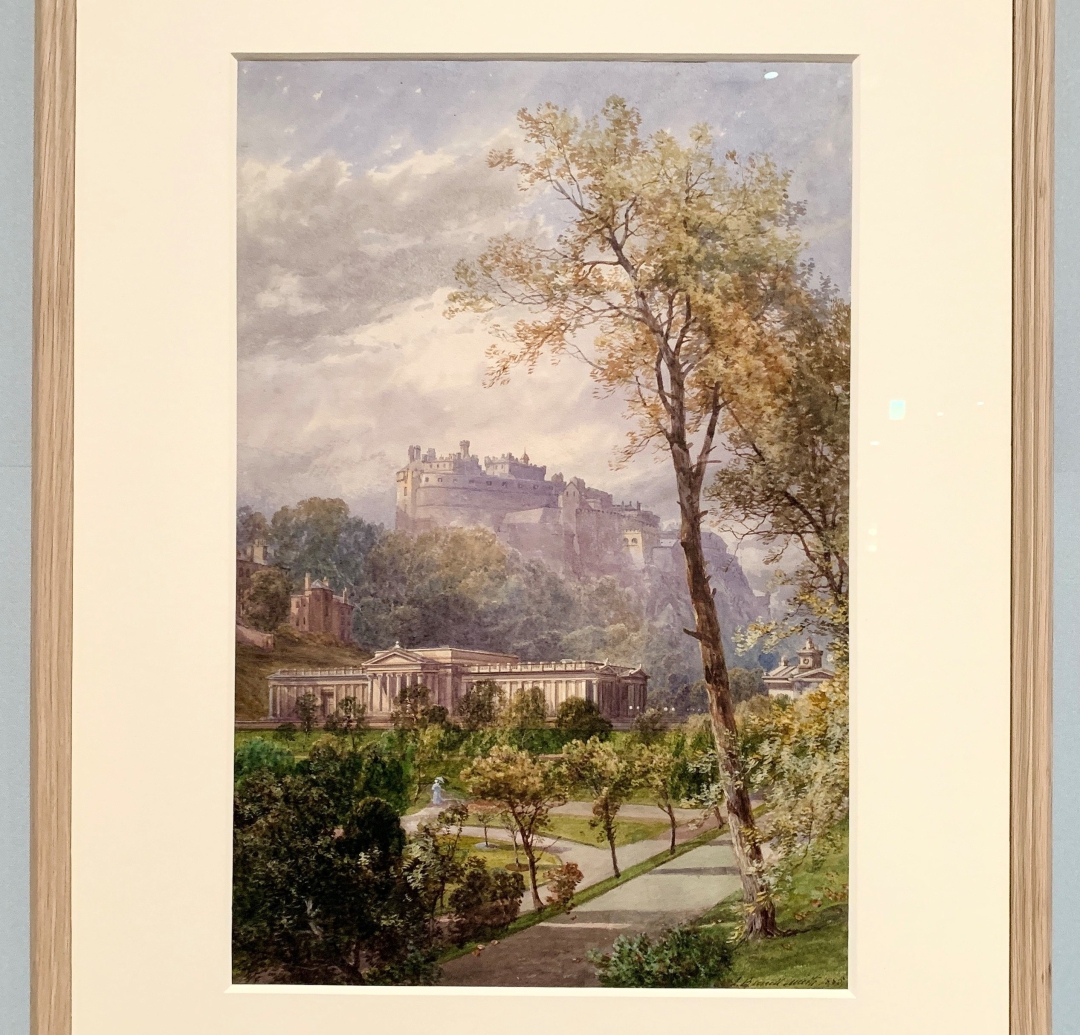
James Burrell Smith, Edinburgh, Princes Street Gardens and Scottish National Gallery View, 1885
If you think "Is it a temple?", This is a museum … An elaborate and romantic watercolor painting with the Edinburgh Castle in the back, which is full of extraordinary feeling like a fantasy world. The museum information that I usually throw away in "Hmm" is completely burned into my memory.
Chapter 1. Renaissance
Next, go to the exhibition area of "Chapter 1. Renaissance". Exhibits creative paintings and drawings from the Renaissance, which flourished around Florence, Venice and Rome.

Andrea del Verrocchio (Attribution) << Our Lady Worshiping Infant Christ (“Virgin of Ruskin”) >> circa 1470
Leonardo da Vinci's teacher, Verrocchio, depicts the ruined temple in "The Virgin of Worship of the Infant Christ (" Our Lady of Ruskin ")", which is unusual for the background of the Madonna and Child of this era. .. It can be said that it is an important example showing the characteristics of the Renaissance of "rediscovery and analysis of the ancient world" in religious paintings.

Paris Bordone << Venetian women wearing makeup >> circa 1550
On the other hand, there are also unprecedented secular works such as Bordone's "Venice Women in Makeup", which refined the sensual theme of a high-class whore showing skin with mythical and allegorical metaphors. Taking up what has come to be drawn, it introduces the expansion of activity opportunities for artists of this era and the variety of interests and tastes of clients.
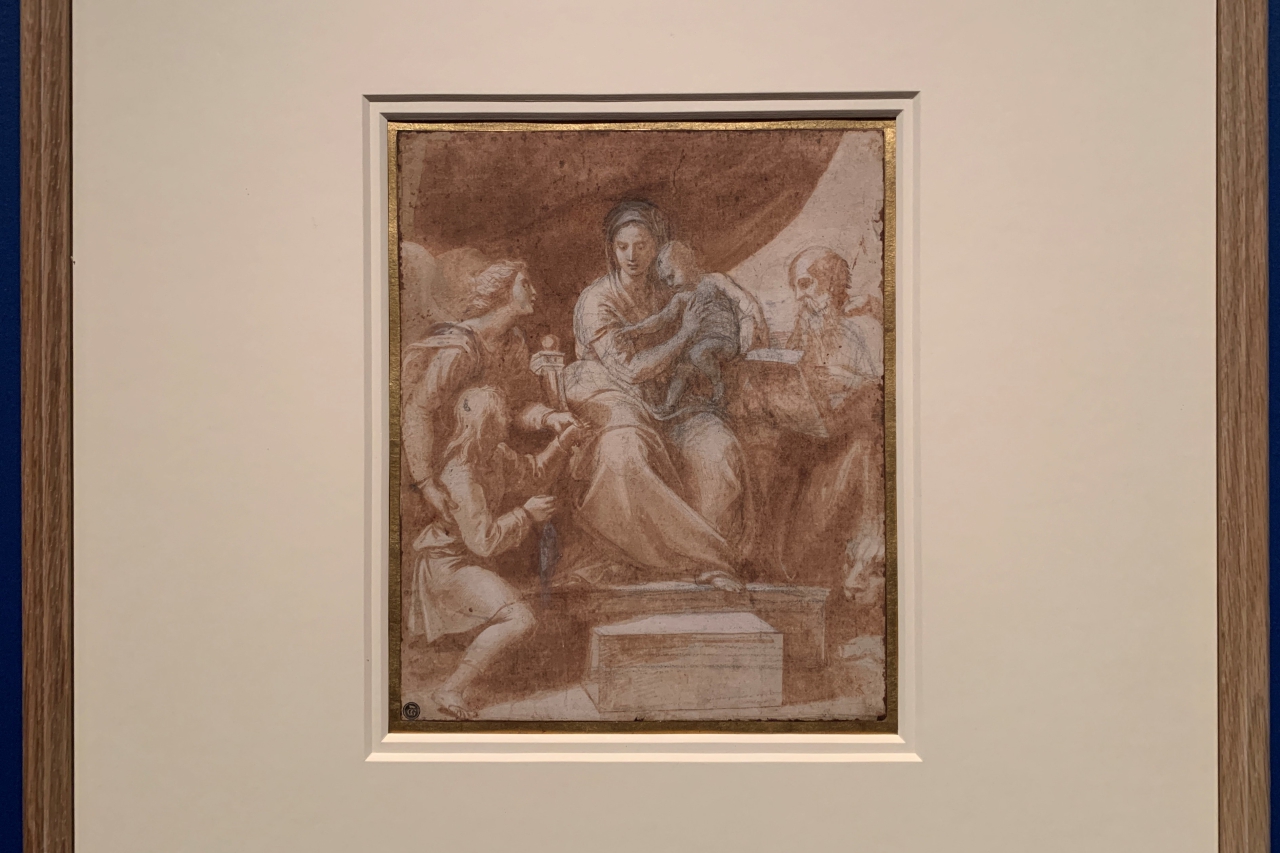
Raphael Sanzio << Study for "Madonna with the Fish" >> circa 1512-14

Correggio (Antonio Allegri) (attribution) "Allegory of Virtue (unfinished)" circa 1550-1560
There is also an exhibition of beautiful drawings of Raphael and Titian, and an unfinished work "Allegory of Virtue (Unfinished)", which is said to be by Correggio and is more valuable than the finished product (?). It is a fascinating work that makes you imagine the completed "Mottainai" at the same time as you feel sorry for seeing the three-dimensional effect of a woman on the right side of the screen like CG. Although the number of works was small at 12 points, it was impressive.
Chapter 2. Baroque
"Chapter 2. Baroque" features works by innovative 17th-century European painters such as Velázquez and Rembrandt who tried to overturn the traditional worldview.

Diego Velázquez, An Old Woman Cooking Eggs, 1618
The early masterpiece of the Spanish painter Velázquez, who created unprecedented realism paintings by raising the small subjects of everyday life to the realm of great art, is the first visit to Japan at this exhibition.
The skin and clothes of the boy and the old woman, as well as the texture of the tableware and ingredients in the foreground are skillfully drawn, and the dramatic light and dark depiction creates a solemn atmosphere with the ordinary motifs of the common people. It's amazing because this is a work I drew when I was 18 or 19 years old …
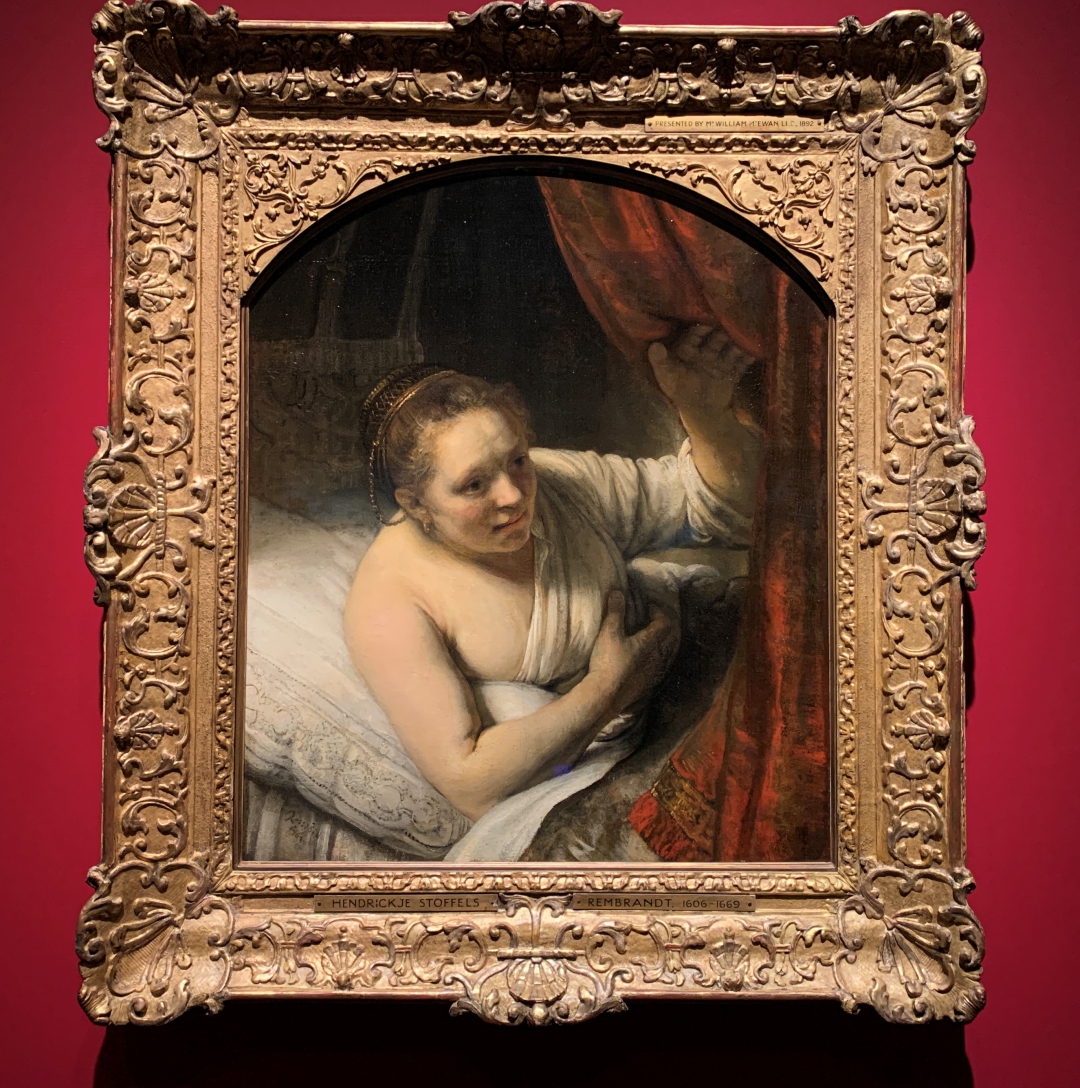
Rembrandt van Rijn, Woman in Bed, 1647
Also noteworthy is the mysterious work "Woman in Bed" by Rembrandt, the greatest artist of the 17th century Holland, who gave the characters of the Bible and myth a deep humanity and struck a chord with the viewer.
Although the subject-specific elements are avoided, it seems that Sarah, whose groom was killed by the devil seven times on the first night of marriage, is watching the battle between her new husband Tobia and the devil in the Old Testament. It is said that. The complex facial expressions that cast shadows on the face, anticipation and anxiety, and above all, convey the urgency, make me feel like Rembrandt's skillful emotional expression.
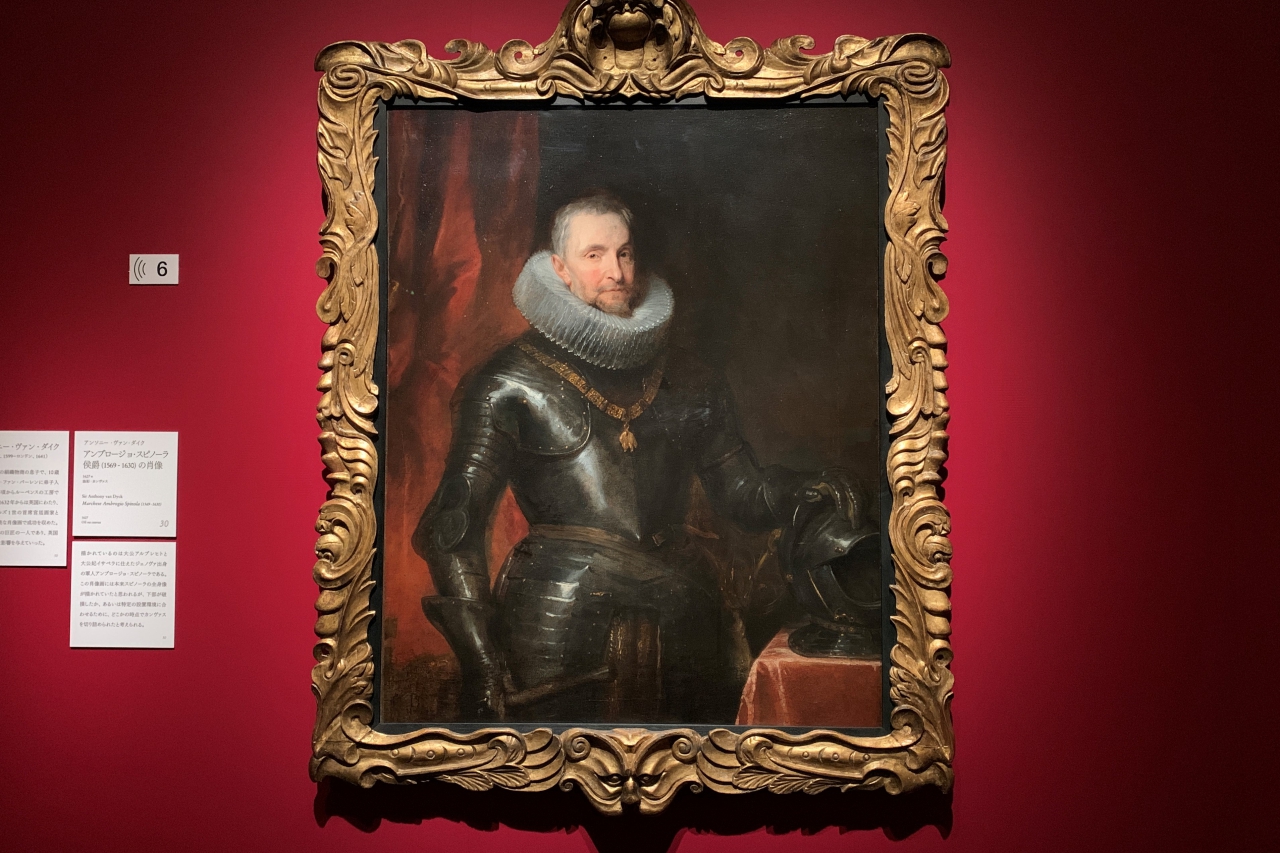
Anthony van Dyck, Portrait of Marquis Ambrogio Spinola (1569-1630), 1627
Van Dyck's "Portrait of Marquis Ambrogio Spinola (1569-1630)", which had a great influence on later British art in the field of portraiture, was also impressive, but what was particularly interesting in this "Baroque" area was. It was the Italian painter Leni's "Crown of Moses and Pharaoh".
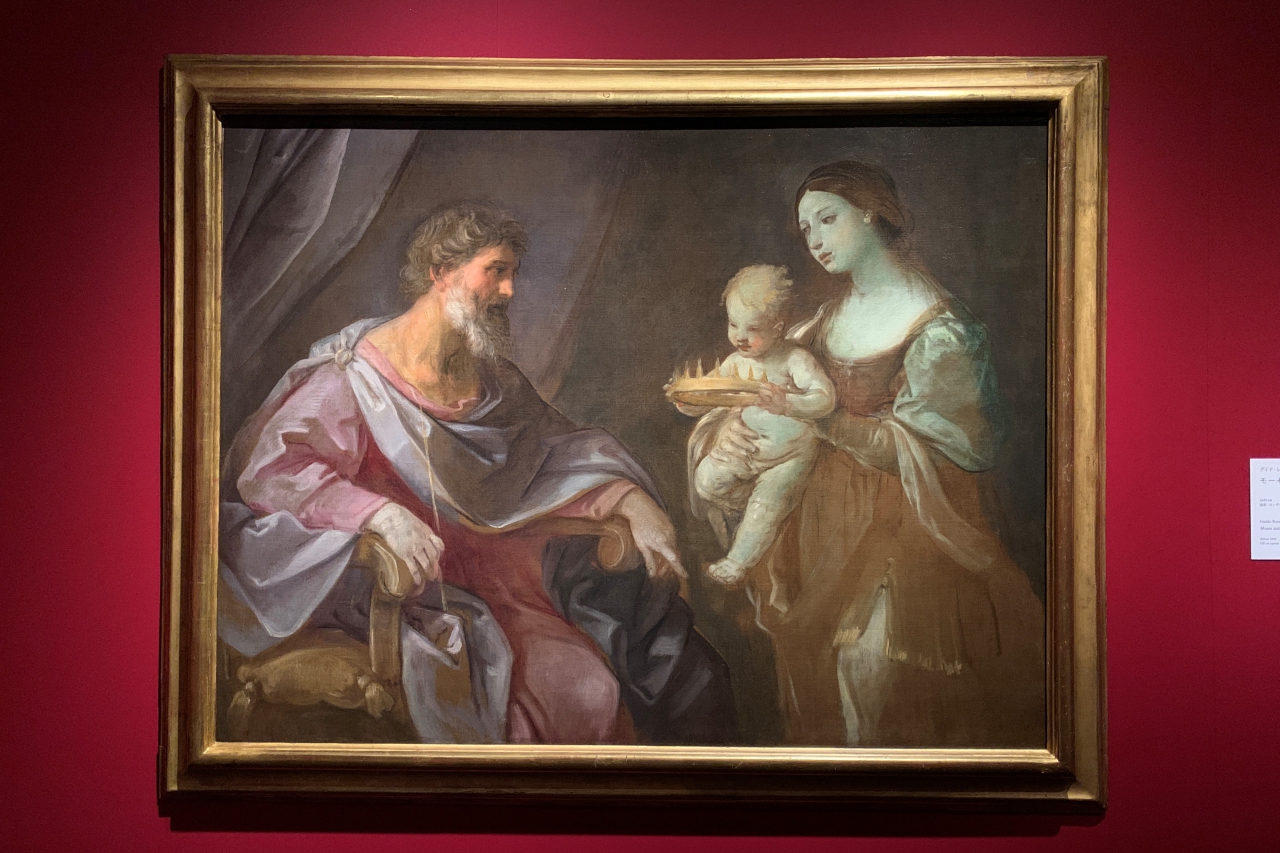
Guido Reni "Crown of Moses and Pharaoh" circa 1640
The work of Reni, who has a graceful human body, clear outlines, and a balanced composition, has been described as "a painter next to Raphael" in academism and "a genius like a god" by Goethe. It's a strange finish, or something strange, saying, "Women's skin is too green, isn't it? Women are generally blurry compared to men …". I opened the official catalog, thinking that there must be some intention.
Then, it was written that "Leni in his later years was making a work with a technique that seems to be rough and unfinished, but this work may be really unfinished", and it was a little ridiculous. The misunderstanding makes researchers cry. The person who wrote Leni's biography said that he was bitterly describing it as "a messy technique that seems to have been drawn in a hurry." I didn't know that he was the type who polluted the late evening. But this is nice with a mysterious atmosphere.
Chapter 3. The Age of Grand Tour
The 18th century was an era of explosive artistic talent in cities such as Paris, London and Venice. It was also a time when British collectors made a large-scale trip to Europe called the "Grand Tour" with the aim of purchasing art and deepening their cultural culture. "Chapter 3. The Age of the Grand Tour" introduces works from these two perspectives.
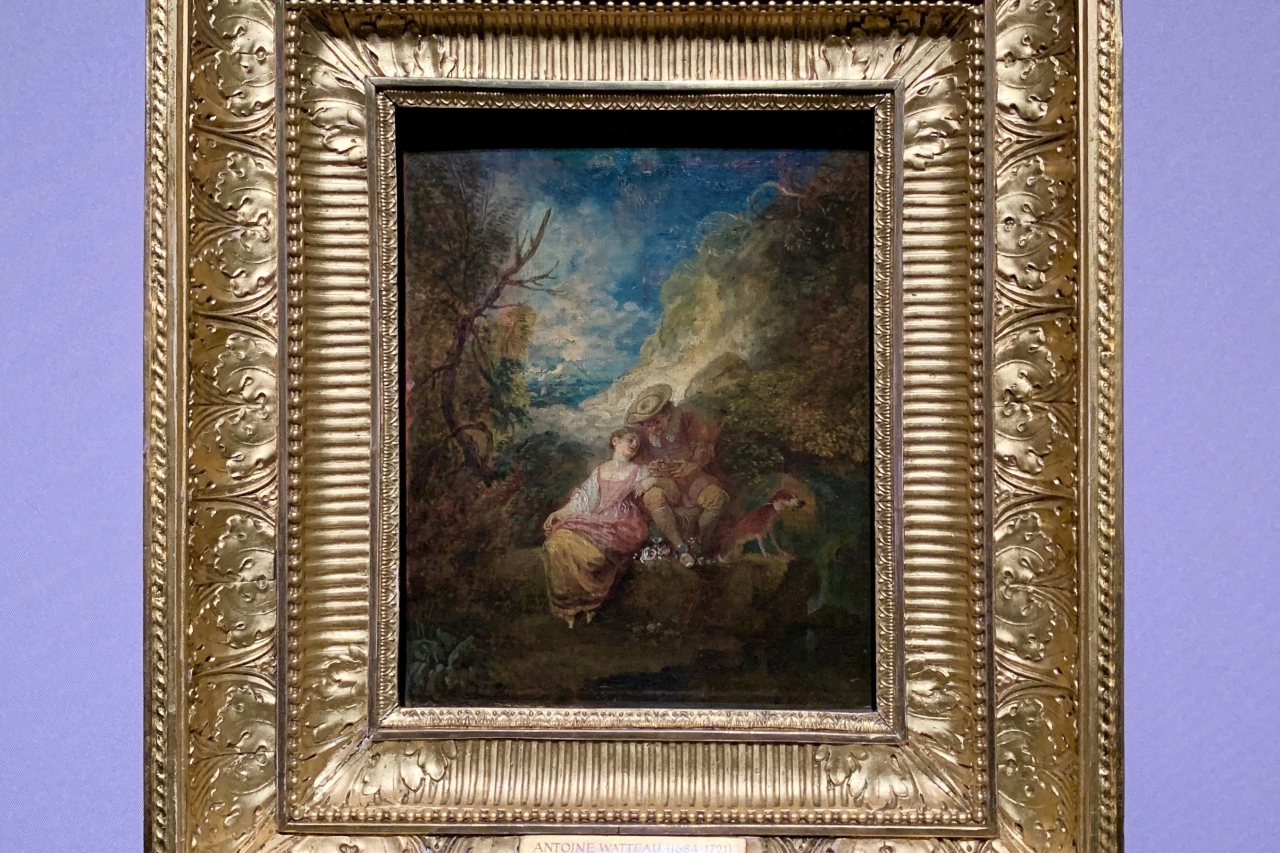
Jean-Antoine Watteau "Swallow's Nest Thief" c. 1712
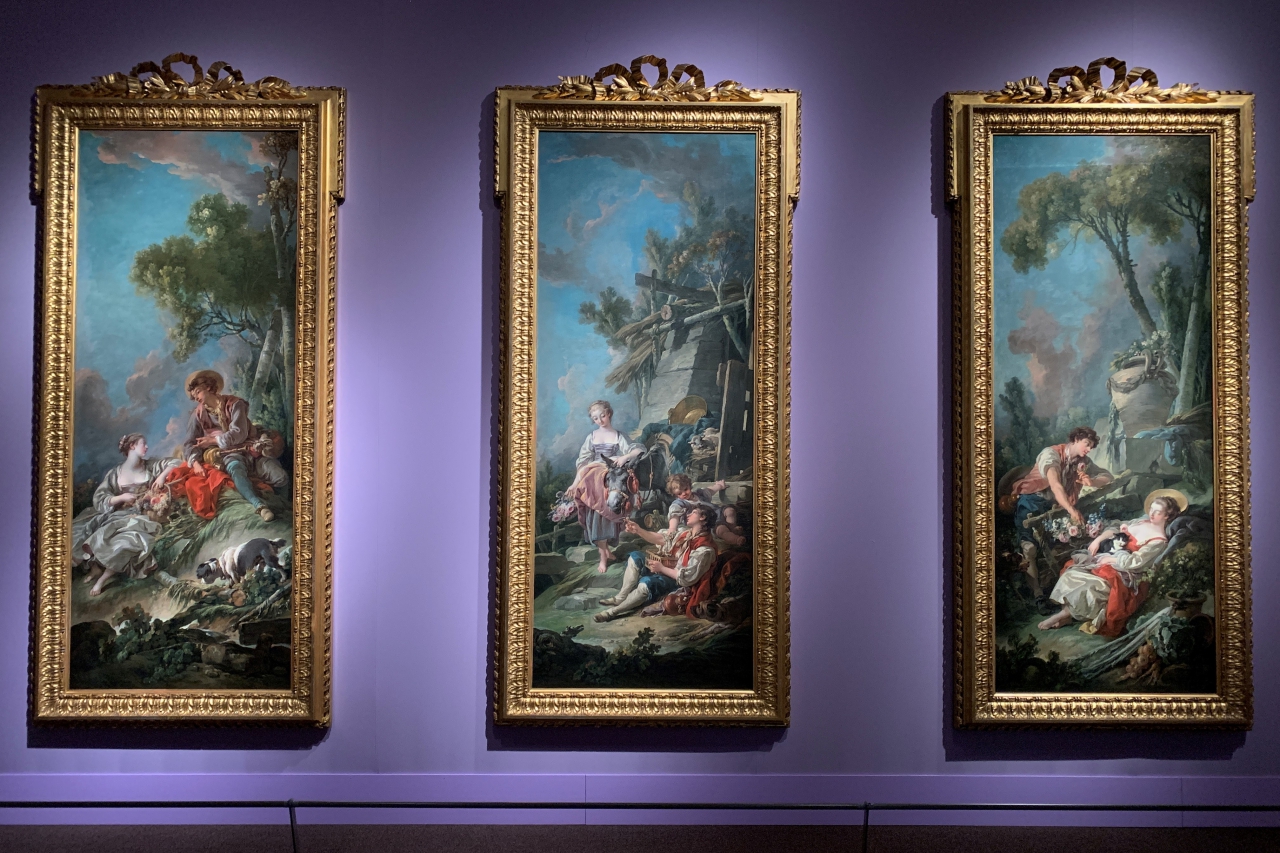
François Boucher << Rural Scene >> From the left, "Lovely Pastoral" 1762 / "Countryside Gift" 1761 / "Sleeping Gardener" 1762
Immediately after entering the exhibition area, he established the genre of "Bird's Nest" and was filled with the charm of the innovator Watteau, who imagined a fantastic utopia. Exhibits three idyllic and romantic masterpieces by. You will be drawn into the gorgeous Rococo world that symbolizes Paris in the 18th century.
On the other hand, as the expression of portraits developed in Britain around this time, Ramsey, Reynolds, and Gainsborough, who are called the three major portrait painters in Britain, are introduced in this exhibition as well.
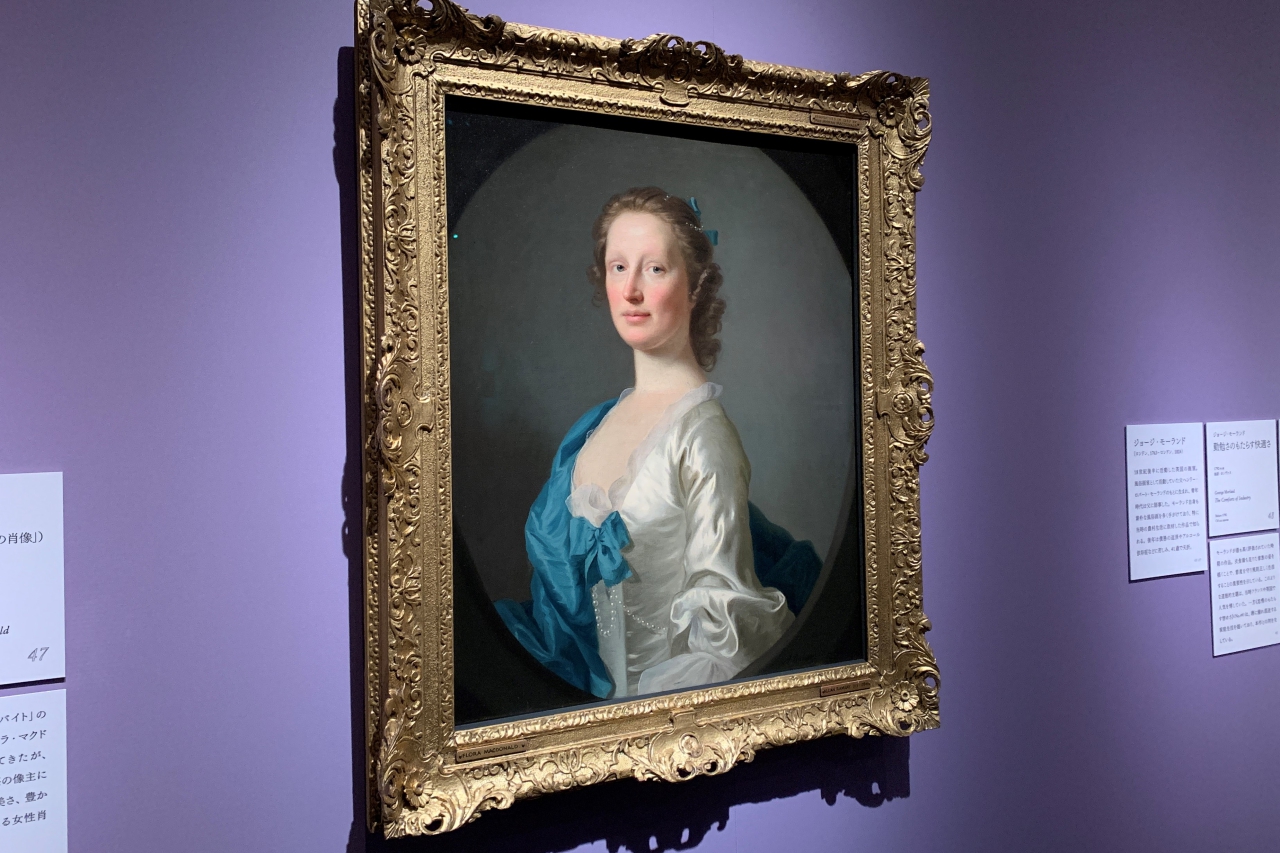
Allan Ramsay, Portrait of a Lady (formerly known as "Portrait of Flora MacDonald"), 1752

Joshua Reynolds, The Ladies of the Waldegrave Family, 1780-81
Of particular note is Reynolds from England, who was the first president of the Royal Academy.
The masterpiece "Waldegrave Ladies" is a work that is difficult to understand at first glance because it does not face the front like a normal portrait. Three women are doing handicrafts, but they are as elegant as a salon. The composition of the three women lined up is likened to the traditional theme of classical art, "Three Goddesses," and thanks to that, it has a timeless beauty. This is a work that symbolizes Reynolds who tried to raise the status of portraits by incorporating "Grand Manners (style of historical painting)".

Thomas Gainsborough "Portrait of Serena Sislswaite on Norman Court" circa 1778
Also, Gainsborough's "Portrait of Serena Thistleswaite on Norman Court", a rival of Reynolds and a respectful relationship with each other, is a must-see for the very bold and quick brushstrokes around the skirt. .. Even though it seems to be a little rough finish, when you look at it from a distance, the glossy texture is beautifully expressed, and it should feel like magic.
Gainsborough succeeded in portraiture, but he actually wanted to be a landscape painter. Does a high level of interest in landscapes create a unique atmosphere on the screen? His work, which fuses people and landscapes, is somewhat lyrical.
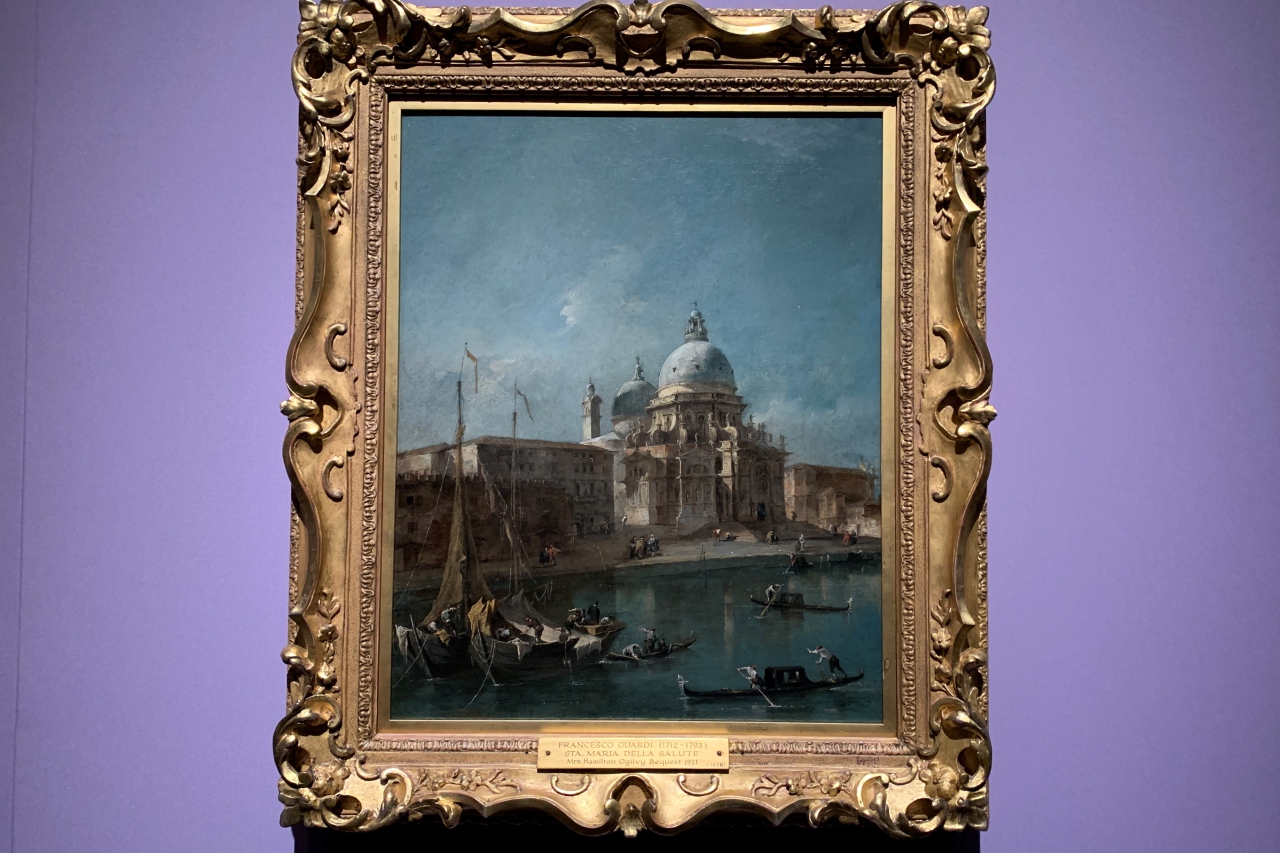
Francesco Guardi "Basilica of Santa Maria della Salute, Venice" circa 1770
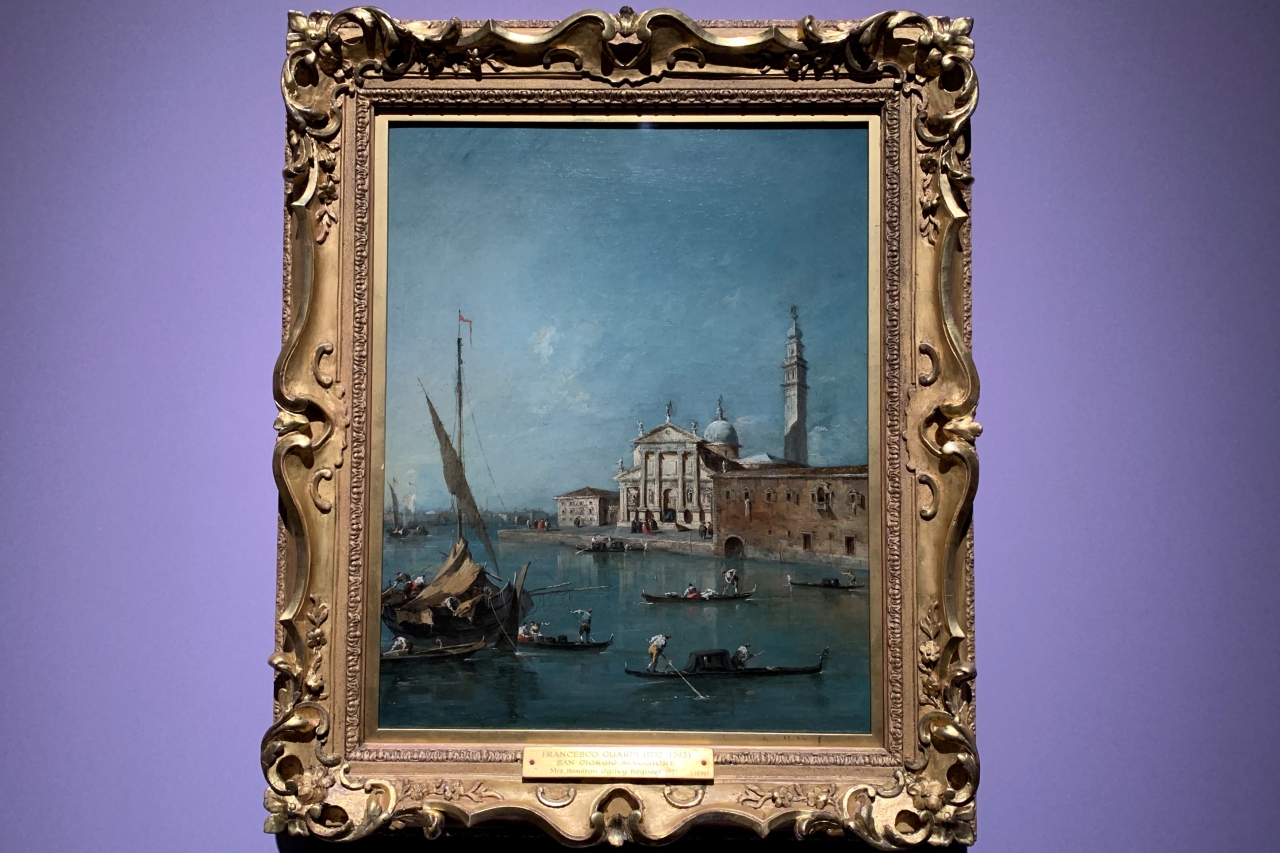
Francesco Guardi "Basilica of San Giorgio Maggiore, Venice" circa 1770
Italy is a place visited by British collectors enthusiastically on the "Grand Tour", and by one of the most famous painters in Venice in the 18th century, Guardi, a "landscape map (Veduta)" depicting the cityscape in detail. Was also very popular.
I can't leave memories of a fun trip in the photos like in the present age, so I feel a sense of familiarity when I think that everyone bought them as souvenirs. The charm is the quick brush strokes reminiscent of the Impressionists and the style that consciously incorporates the feeling of light and air, which is different from the geographic landscape paintings that have been accurately contoured up to that point.
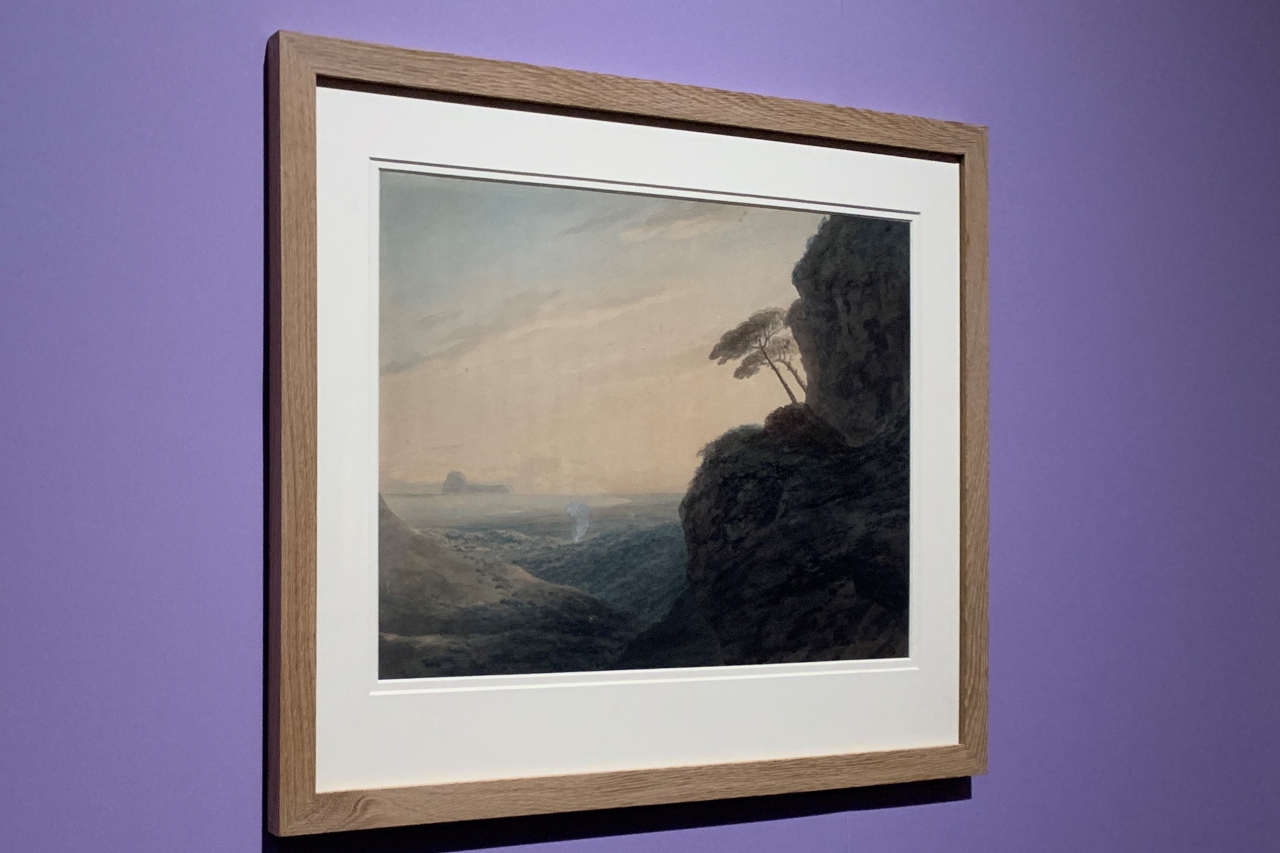
John Robert Cousins 《Road to Camaldoli》 1783-1790
The Road to Camaldoli, created by the English painter Cousins from a sketch of a trip to Italy, was also an unobtrusive but beautiful work. It is a watercolor painting of the bay of Pozzuoli in Naples, and the scenery is different between the sketch and the finished product.
The subdued tones of soft green and bluish grey create a melancholy atmosphere, but the distant sea and sky are fantastic with a hint of rosy light. This landscape is not just a record, but a poetic reconstruction within the painter. For the artists, it seemed to convey how special the land of Italy at this time was.
Chapter 4. Pioneers of the 19th Century
Britain and France in the 19th century continued to favor portraits and landscape paintings, while revolutionary painters such as the Barbizon school, who were active in the middle of the century, and the subsequent Impressionists and Post-Impressionists made a big difference. "Chapter 4. Pioneers of the 19th Century" to introduce that.
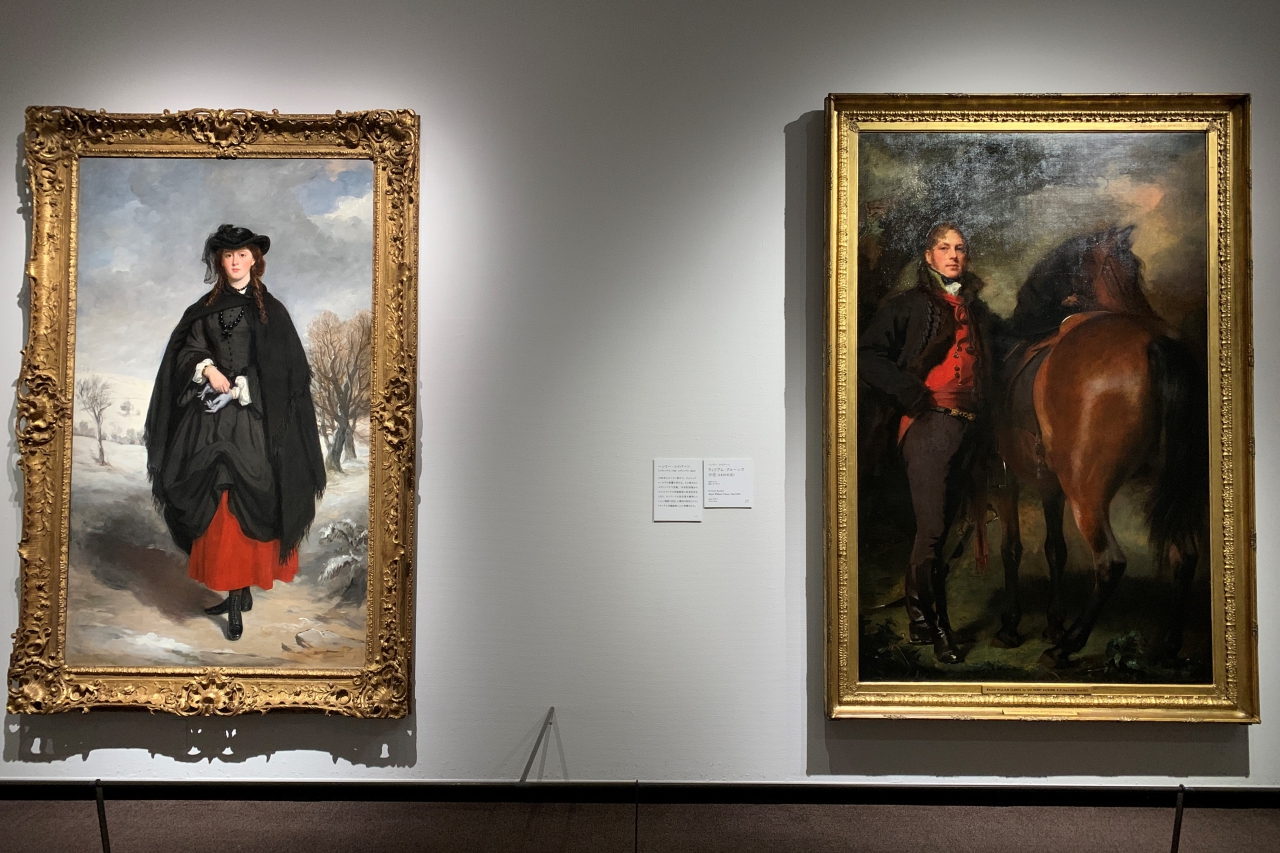
From left, Francis Grant "Ann Emily Sophia Grant (" Daisy "Grant), Mrs. William Markham (1836-1880)" 1857 / Henry Raeburn "Major William Clunes (died 1830)" 1809 -Around 1811
As an example of a brilliant and traditional "Grand Manor" portrait, the highlights are the masterpieces of Scottish painters Rayburn and Grant, who are rarely seen in Japan.
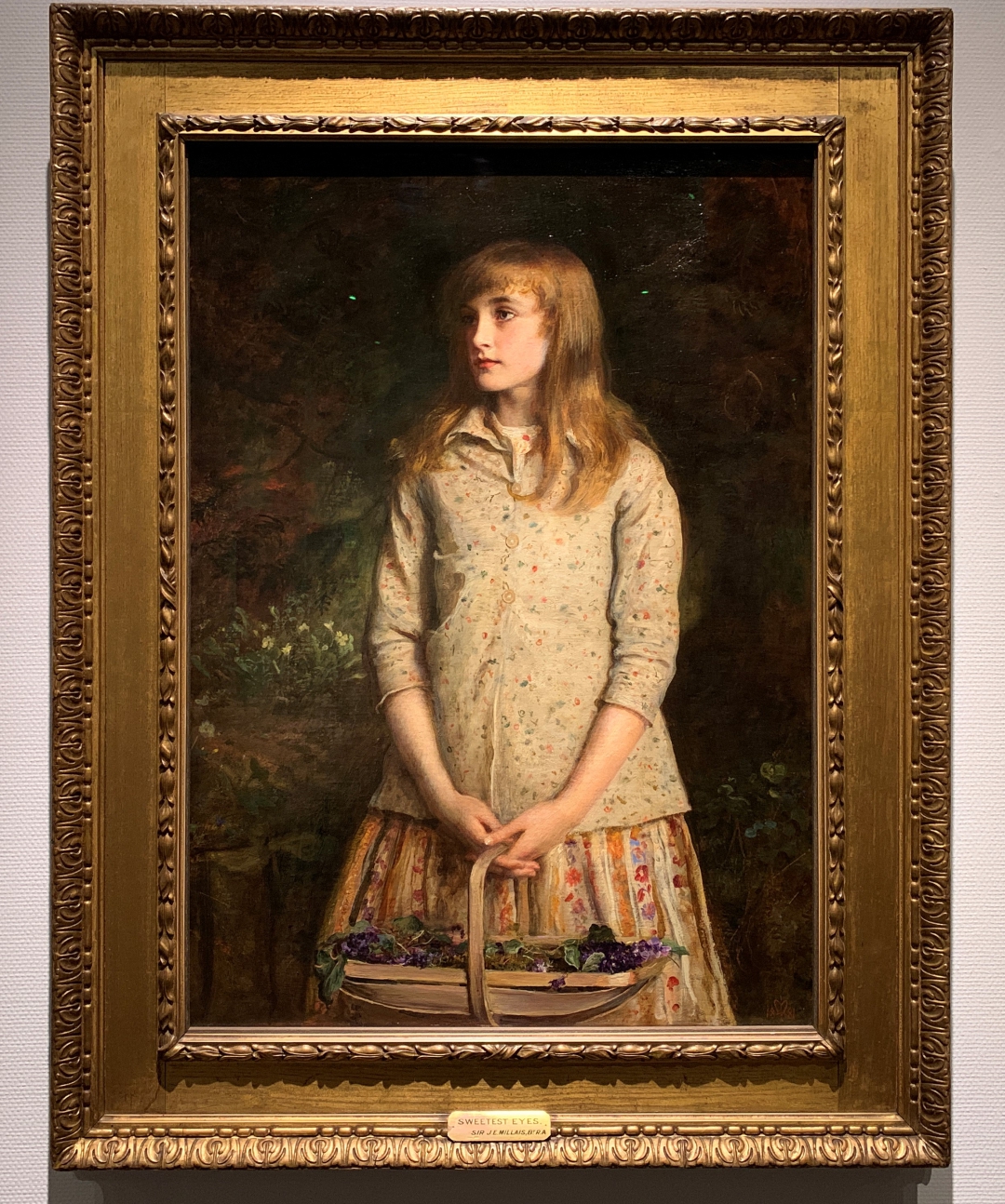
John Everett Millais "" Sweet Eyes Unparalleled from Ancient Times "" 1881
Inspired by Reynolds and Gainsborough, which I introduced earlier, the English painter Millay's "" Sweet eyes like no other in ancient times "" is impressive with clear eyes that look at the harsh reality that will come in a wistful manner. .. While there were many portraits dressed up perfectly, the clothes and hairstyles were plain and simple, and on the contrary, they looked fresh.
It is a work with a very sentimental atmosphere, based on keen observation, and the title is taken from the poem of the female poet Elizabeth Barrett Browning. It is said to express the innocence and fragility of a growing girl along with the picked violet flowers. Thus, the major painters of this era tended to personally interpret the themes of literature and stories.
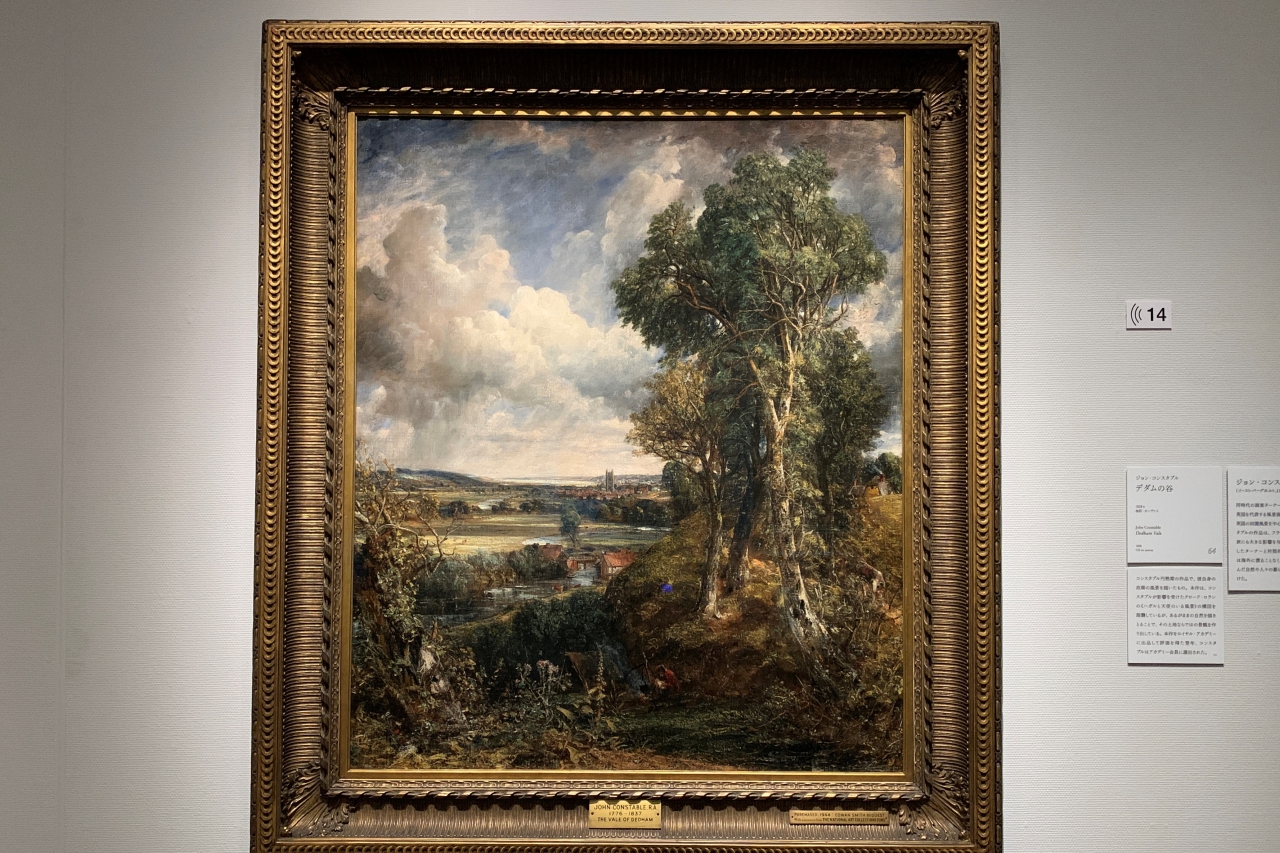
John Constable, The Vale of Dedham, 1828
Don't miss The Vale of Dedham, a master of 19th-century English landscape painting, Constable. This work depicts the rural landscape of his hometown, which he loved, and how the latest attention is paid to the shadows cast by clouds and the plants that seem to convey the feel and coldness of touching them. It is a masterpiece that he described as "probably my masterpiece", feeling the wonderful naturalism unique to him.

Berthe Morisot "Women and Children in the Garden" circa 1883-84
In France, painters have emerged who directly copy the subject and praise the color and light. In this exhibition, follow the transition of the expressions of the revolutionary painters who created the era while being controversial and were widely loved, with works centered on masters such as Corot, Sisley, Renoir, Manet, and Gauguin. increase.
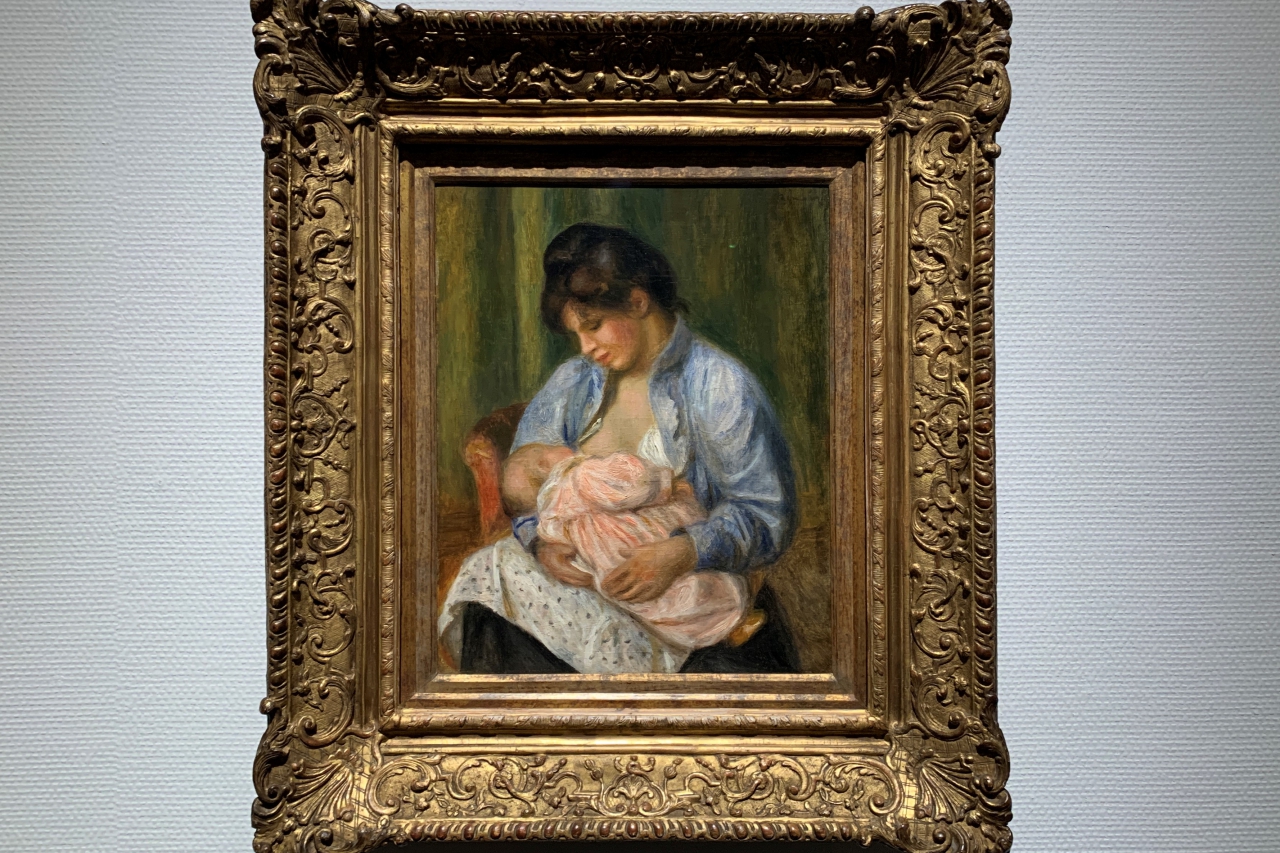
Pierre-Auguste Renoir "Women who feed their children" 1893-94
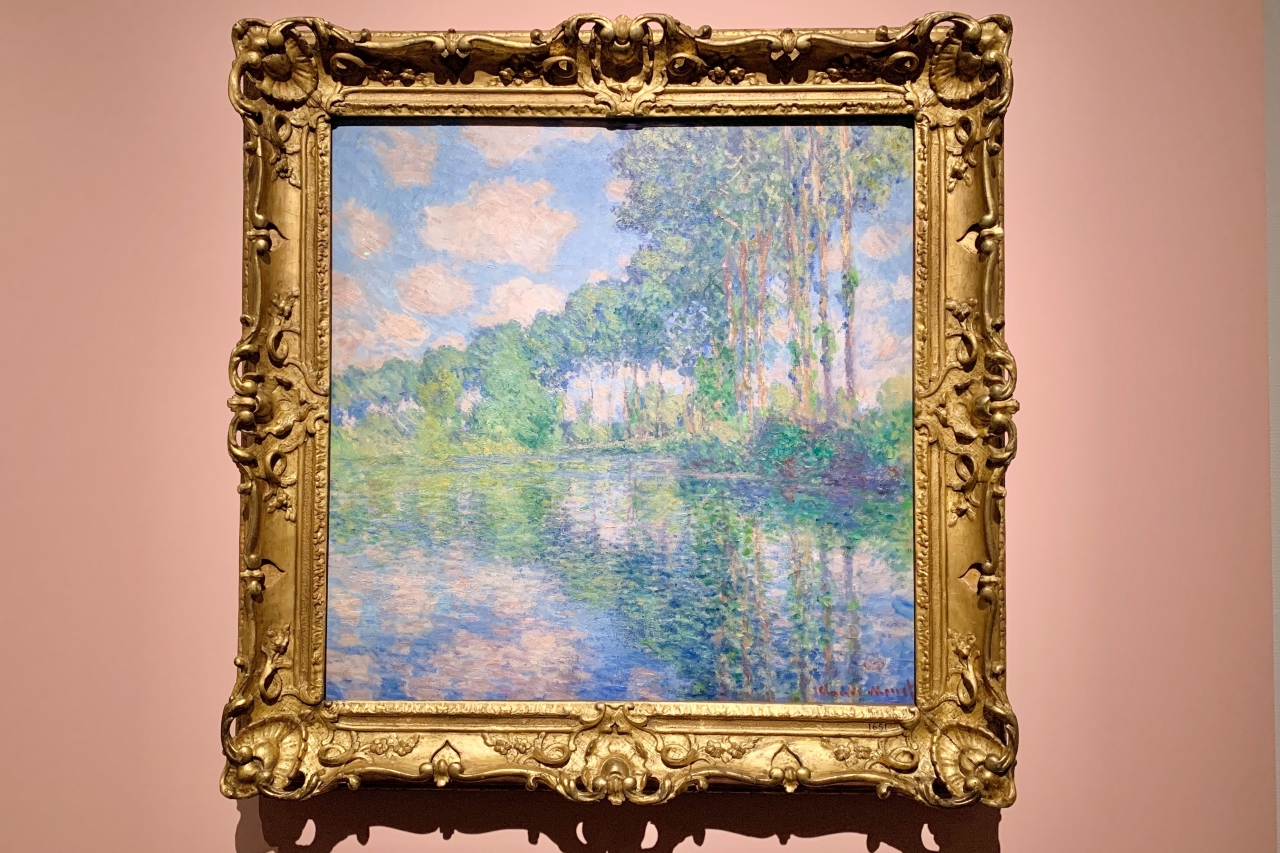
Claude Monet, Poplars along the Epte River, 1891
epilogue
In the epilogue, there is only one work, the masterpiece of the American painter Church, "Niagara Falls seen from the American side".
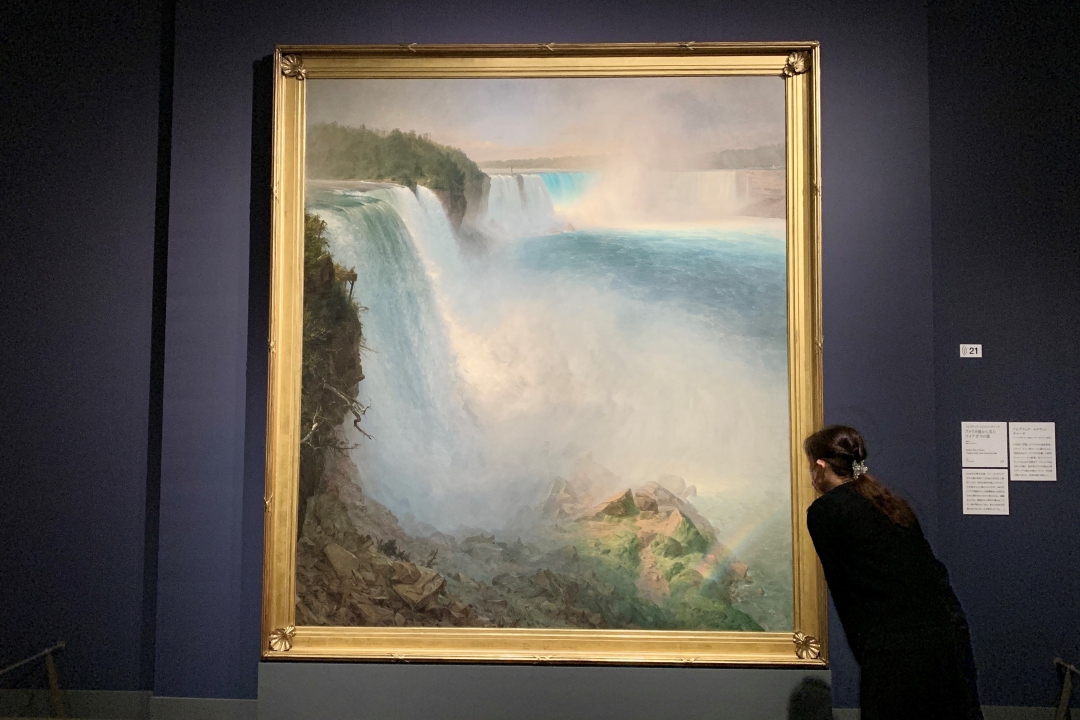
Frederic Edwin Church, Niagara Falls as seen from the American side, 1867
If you don't look closely, you won't notice it, but there is an observatory on the cliff on the left side of the screen, and there is a small figure looking into the waterfall. In contrast to this figure, this is the largest work in this exhibition, which beautifully expresses the wonders of Niagara Falls, the sublime and dramatic scale. (257.5 x 227.3 cm)
It is a masterpiece suitable for decorating the last, but despite having consciously taken up English and Scottish painters so far, I wonder why the works of American painters who painted American nature suddenly appeared. and. Yasuyuki Takashiro, curator of the Tokyo Metropolitan Art Museum, explained the reason as follows.
"It's a work donated to the Scottish National Gallery for his hometown by a successful, fortune-making businessman born in a poor Scottish family. The Scottish National Gallery was initially funded to buy paintings. The reason why we were able to form such a high quality and wonderful collection now is that we have a history of receiving donations from local celebrities and citizens and purchasing works with donations. The work symbolizes the history of the Scottish National Gallery's collection formation and marks the end of this exhibition as a monumental work. "
"Scottish National Gallery THE GREATS Beauty Masters" highlights the masterpieces of Scottish and English painters while introducing the works of Western painting masters from the Renaissance to the latter half of the 19th century. It will be held until July 3, 2022 (Sun).
Overview of "Scottish National Gallery THE GREATS Beauty Masters"
| Legislative session | April 22nd (Friday) -July 3rd (Sunday), 2022 |
| venue | Tokyo Metropolitan Art Museum Planning Exhibition Room |
| Opening hours | 9: 30-17: 30, Fridays 9: 30-20: 00 (admission is 30 minutes before closing) * Please check the official exhibition website for information on opening at night. |
| closing day | Monday (but open on May 2nd) |
| Admission fee | General 1900 yen / College student / vocational school student 1300 yen / 65 years old and over 1400 yen * It is a reservation system with a designated date and time. For other details, please check the official website of the exhibition . |
| Organizer | Tokyo Metropolitan Foundation for History and Culture Tokyo Metropolitan Museum of Art, Mainichi Newspapers, NHK, NHK Promotion |
| inquiry | 050-5541-8600 (Hello dial) |
| Exhibition official website | https://greats2022.jp |
* The content of the article is as of the time of publication. Please check the official website of the exhibition for the latest information.
<Past coverage articles>
[Interview Report] The National Museum of Western Art is reopened! Introducing highlights such as the front yard designed by Le Corbusier and the 19th Century Hall, which is open to the public for free.
Click here for a list


